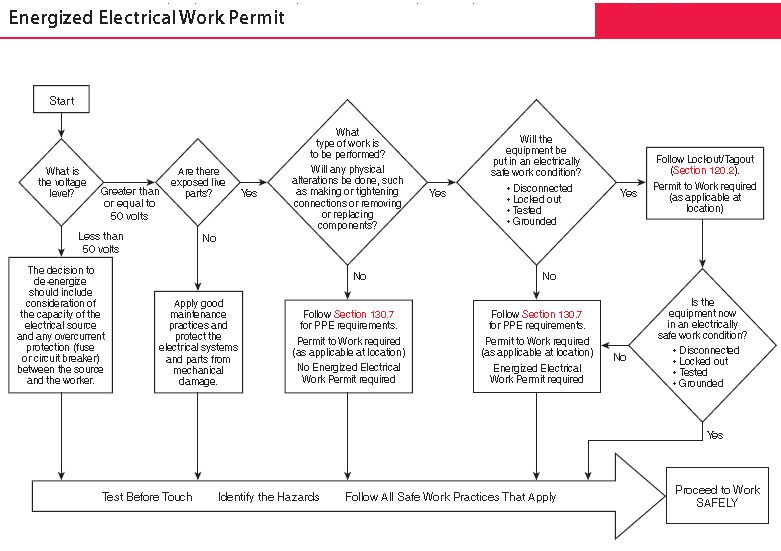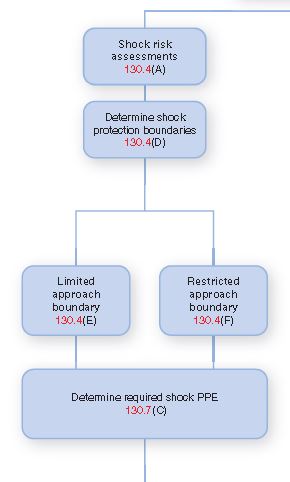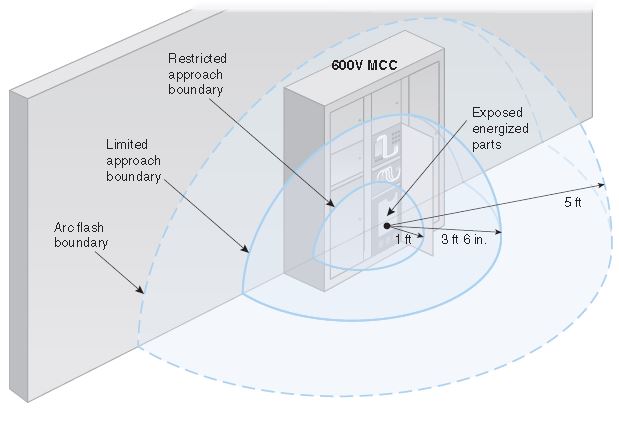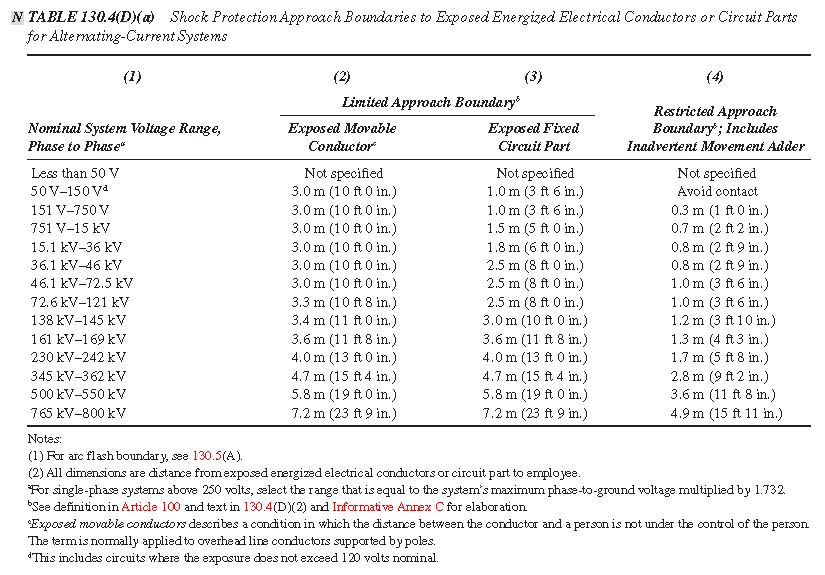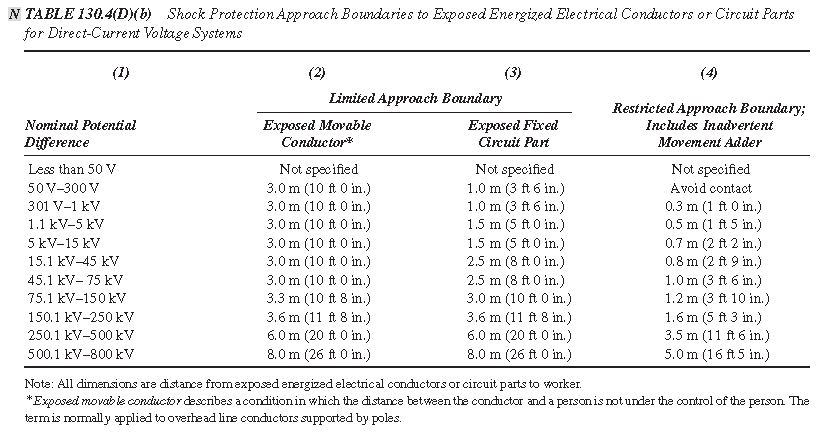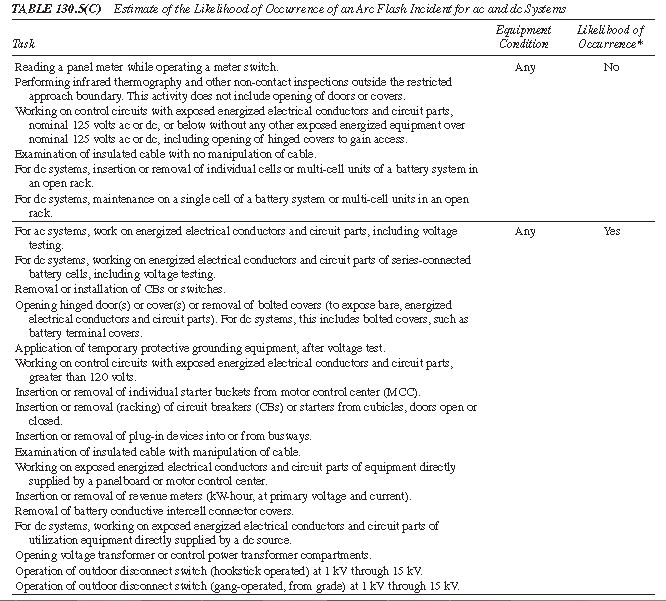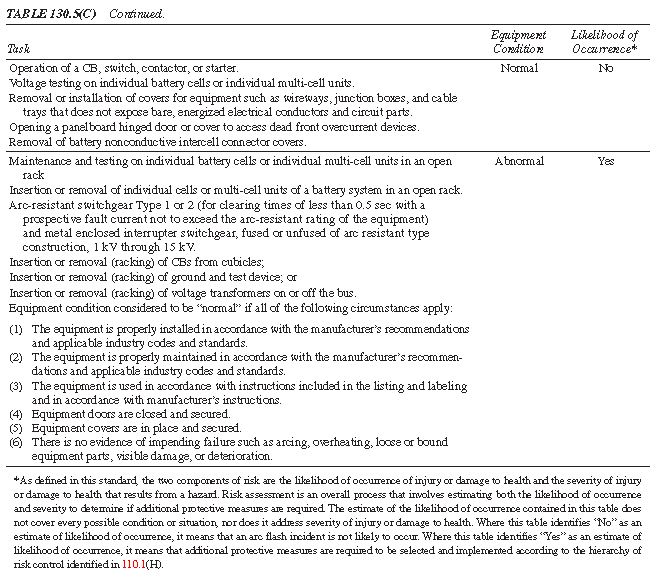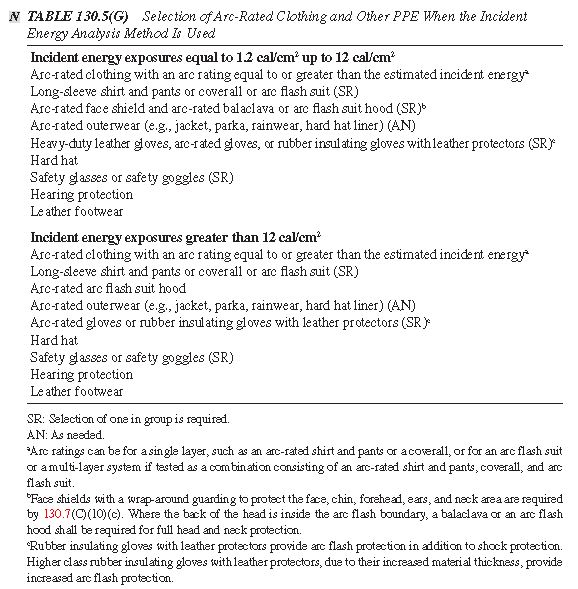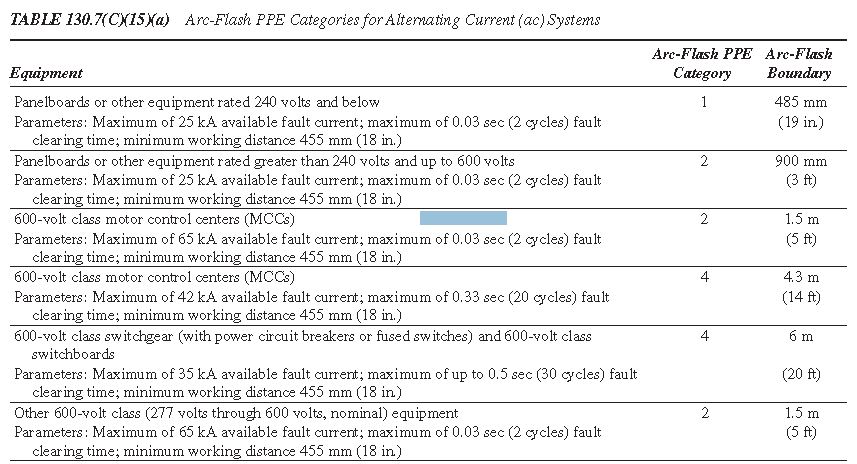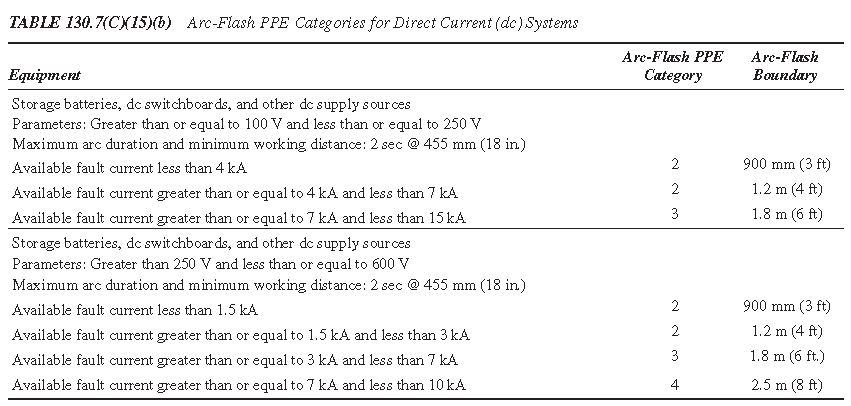Title Page
-
Document No.
-
Audit Title
-
Job number
-
Conducted on
-
Prepared by
-
Location
-
Energized Electrical Work Permit Flow Chart
-
Energized Electrical work flow chart
https://sheaelectricllc.sharepoint.com/:i:/r/All%20Shea%20Staff/Safety/Shea%20Electric%20Safety%20Manual/Shea%20Electric%20and%20Communications%20Safety%20Policy%20and%20Procedure%20Manual/Appendix/Energized%20Electric%20Work%20Permit/Energized%20Electrical%20Work%20Permit.JPG?csf=1&e=ZjaFtN
Part 1: Project information - to be completed by requester
-
Select date
-
Requester/ Title
-
Who is in charge? - lead qualified electrical worker
-
Project manager
-
SITE/BUILDING/ROOM/LOCATION
Equipment and/or circuit to be worked on
-
Description of equipment and/or circuit
-
Determine all possible sources of electrical supply to the specific equipment. Check applicable up-to-date drawings, diagrams, and identification tags. What is source #1
-
Determine all possible sources of electrical supply to the specific equipment. Check applicable up-to-date drawings, diagrams, and identification tags. What is source #1
-
Determine all possible sources of electrical supply to the specific equipment. Check applicable up-to-date drawings, diagrams, and identification tags. What is source #2 if applicable?
-
Determine all possible sources of electrical supply to the specific equipment. Check applicable up-to-date drawings, diagrams, and identification tags. What is source #2 if applicable?
Part 2: To be completed by the electrically qualified persons doing the work
-
Detailed job description procedure to be used in performing the work
-
Optional. Upload detailed job description procedure to be used in performing the work
-
Justification for energized work per 130.2 (A)
Part 3: Risk Assessment Procedure
-
Risk Assessment Flow Chart
https://sheaelectricllc.sharepoint.com/:b:/r/All%20Shea%20Staff/Safety/Shea%20Electric%20Safety%20Manual/Shea%20Electric%20and%20Communications%20Safety%20Policy%20and%20Procedure%20Manual/Appendix/Energized%20Electric%20Work%20Permit/Risk%20Assessment%20Flow%20Chart.pdf?csf=1&e=y2QHKo -
Shock Risk Assessment
-
Nominal voltage to which personnel will be exposed
- 120/208
- 120/240
- 277/480
- 50v or less
-
Results of the shock hazard analysis. What are the hazards?
-
Necessary shock, personal and other protective equipment to safety perform assigned task
- Rubber insulating gloves and leather protectors,
- Rubber insulating sleeves as needed
- Class G or E hard hat as needed
- Safety glasses or goggles as needed
- Dielectric overshoes as needed
-
Shock Protection Boundaries
-
Shock Protection Boundaries
https://sheaelectricllc.sharepoint.com/:i:/r/All%20Shea%20Staff/Safety/Shea%20Electric%20Safety%20Manual/Shea%20Electric%20and%20Communications%20Safety%20Policy%20and%20Procedure%20Manual/Appendix/Energized%20Electric%20Work%20Permit/Shock%20Protection%20Boundaries.JPG?csf=1&e=S8BXBI -
TABLE 130.4(D)(a) Shock Protection Approach Boundaries to Exposed Energized Electrical Conductors or Circuit Parts
for Alternating-Current Systems -
TABLE 130.4(D)(a) Shock Protection Approach Boundaries to Exposed Energized Electrical Conductors or Circuit Parts
for Alternating-Current Systems
https://sheaelectricllc.sharepoint.com/:i:/r/All%20Shea%20Staff/Safety/Shea%20Electric%20Safety%20Manual/Shea%20Electric%20and%20Communications%20Safety%20Policy%20and%20Procedure%20Manual/Appendix/Energized%20Electric%20Work%20Permit/Table%20130.4(D)(a).JPG?csf=1&e=5hEB8z -
TABLE 130.4(D)(b) Shock Protection Approach Boundaries to Exposed Energized Electrical Conductors or Circuit Parts
for Direct-Current Voltage Systems -
TABLE 130.4(D)(b) Shock Protection Approach Boundaries to Exposed Energized Electrical Conductors or Circuit Parts
for Direct-Current Voltage Systems
https://sheaelectricllc.sharepoint.com/:i:/r/All%20Shea%20Staff/Safety/Shea%20Electric%20Safety%20Manual/Shea%20Electric%20and%20Communications%20Safety%20Policy%20and%20Procedure%20Manual/Appendix/Energized%20Electric%20Work%20Permit/Table%20130.4(D)(b).JPG?csf=1&e=vA5UOh -
Arc Flash Risk Assessment
-
TABLE 130.5(C) Estimate of the Likelihood of Occurrence of an Arc Flash Incident for ac and dc Systems
-
TABLE 130.5(C) Estimate of the Likelihood of Occurrence of an Arc Flash Incident for ac and dc Systems
https://sheaelectricllc.sharepoint.com/:i:/r/All%20Shea%20Staff/Safety/Shea%20Electric%20Safety%20Manual/Shea%20Electric%20and%20Communications%20Safety%20Policy%20and%20Procedure%20Manual/Appendix/Energized%20Electric%20Work%20Permit/Table%20130.5(C).JPG?csf=1&e=xcOvTd -
TABLE 130.5(C) Estimate of the Likelihood of Occurrence of an Arc Flash Incident for ac and dc Systems. Continued
-
TABLE 130.5(C) Estimate of the Likelihood of Occurrence of an Arc Flash Incident for ac and dc Systems. Continued
https://sheaelectricllc.sharepoint.com/:i:/r/All%20Shea%20Staff/Safety/Shea%20Electric%20Safety%20Manual/Shea%20Electric%20and%20Communications%20Safety%20Policy%20and%20Procedure%20Manual/Appendix/Energized%20Electric%20Work%20Permit/Table%20130.5(C)%20continued.JPG?csf=1&e=0bHGMN -
Select arc flash risk assessment method. 130.5(F)
-
Calculate arc flash boundary and incident energy at working distance
-
Determine required arc-rated PPE 130.7(C), 130.5(G)
-
Table 130.5(G) identifies the arc-rated clothing and other PPE requirements of Article
130 and shall be permitted to be used with the incident energy analysis method of selecting
arc flash PPE -
Table 130.5(G) identifies the arc-rated clothing and other PPE requirements of Article
130 and shall be permitted to be used with the incident energy analysis method of selecting
arc flash PPE
https://sheaelectricllc.sharepoint.com/:i:/r/All%20Shea%20Staff/Safety/Shea%20Electric%20Safety%20Manual/Shea%20Electric%20and%20Communications%20Safety%20Policy%20and%20Procedure%20Manual/Appendix/Energized%20Electric%20Work%20Permit/Table%20130.5(G).JPG?csf=1&e=7XhgyC -
Select all arc-flash required PPE.
- Arc-rated clothing with an arc rating equal to or greater than the estimated incident energy
- Long-sleeve shirt and pants or coverall or arc flash suit
- Arc-rated face shield and arc-rated balaclava or arc flash suit hood
- Arc-rated outerwear (e.g., jacket, parka, rainwear, hard hat liner)
- Heavy-duty leather gloves, arc-rated gloves, or rubber insulating gloves with leather protectors
- Hard hat
- Safety glasses or safety goggles
- Hearing protection
- Leather footwear
-
PPE Category Method
-
AC - Confirm compliance with Table 130.7(C)(15)(a) conditions and parameters; DC - Confirm compliance with Table 130.7(C)(15)(b) conditions and parameters MUST CONFIRM COMPLIANCE WITH ALL PARAMETERS TO UTILIZE THIS METHOD. Tables below.
- Maximum of 25 kA available fault current
- maximum of 0.03 sec (2 cycles) fault clearing time
- minimum working distance 455 mm (18 in.)
-
Obtain arc flash boundary and PPE category
-
TABLE 130.7(C)(15)(a) Arc-Flash PPE Categories for Alternating Current (ac) Systems
-
TABLE 130.7(C)(15)(a) Arc-Flash PPE Categories for Alternating Current (ac) Systems
https://sheaelectricllc.sharepoint.com/:i:/r/All%20Shea%20Staff/Safety/Shea%20Electric%20Safety%20Manual/Shea%20Electric%20and%20Communications%20Safety%20Policy%20and%20Procedure%20Manual/Appendix/Energized%20Electric%20Work%20Permit/Table%20130.7(C)(15)(a).JPG?csf=1&e=So5Ldw -
TABLE 130.7(C)(15)(b) Arc-Flash PPE Categories for Direct Current (dc) Systems
-
TABLE 130.7(C)(15)(b) Arc-Flash PPE Categories for Direct Current (dc) Systems
https://sheaelectricllc.sharepoint.com/:i:/r/All%20Shea%20Staff/Safety/Shea%20Electric%20Safety%20Manual/Shea%20Electric%20and%20Communications%20Safety%20Policy%20and%20Procedure%20Manual/Appendix/Energized%20Electric%20Work%20Permit/Table%20130.7(C)(15)(b).JPG?csf=1&e=25LDB5 -
Select Arc-Flash PPE Category
-
Select all arc-flash required PPE.
- Arc-rated clothing with an arc rating equal to or greater than the estimated incident energy
- Long-sleeve shirt and pants or coverall or arc flash suit
- Arc-rated face shield and arc-rated balaclava or arc flash suit hood
- Arc-rated outerwear (e.g., jacket, parka, rainwear, hard hat liner)
- Heavy-duty leather gloves, arc-rated gloves, or rubber insulating gloves with leather protectors
- Hard hat
- Safety glasses or safety goggles
- Hearing protection
- Leather footwear
-
Means employed to restrict the access of unqualified persons from the work area
- Qualified personnel
- Danger tape
- Cone/stanchions
- Ladders
-
Access to work site
- Ladder
- Scaffolding
- Roof
- Tunnel or pit
- Suspended ceiling
- Readily accessible
-
Potential Hazards
- Heat/Cold stress
- Electrical: damp/wet
- Confined Space
- Fall hazard
- Overhead hazard
- Fire hazard
-
Describe potential human error and mitigation methods for each potential hazard selected.
Part 4: Job work plan and briefing
-
Describe the safe work practices to be employed
-
Emergency response site communications
- Cell phone
- Land line/premise phone system
- Radio
-
Prepare for emergency. Select all that apply as yes.
- Is the standby person CPR/AED trained?
- Is an AED available?
- Is the required emergency equipment available? Where is it?
- Plan to shut off equipment/circuit in emergency?
- Is there a fire extinguisher available?
- Are the emergency telephone numbers known?
-
Provide details for above checklist
Part 3 Approval(s) to perform the work while electrically energized
-
Electrically Qualified Person #1
-
Electrically Qualified Person Signature #1
-
Date
-
Do you agree the above described work can be done safely?
-
Speak to the requester about the possibility of not working energized, or not performing the work. DO NOT do the above work unless you understand the hazards and are comfortable .
-
Evidence of completion of a job briefing, including discussion of any job-related hazards
-
Electrically Qualified Person #2
-
Electrically Qualified Person Signature #2
-
Date
-
Do you agree the above described work can be done safely?
-
Speak to the requester about the possibility of not working energized, or not performing the work. DO NOT do the above work unless you understand the hazards and are comfortable
-
Evidence of completion of a job briefing, including discussion of any job-related hazards






